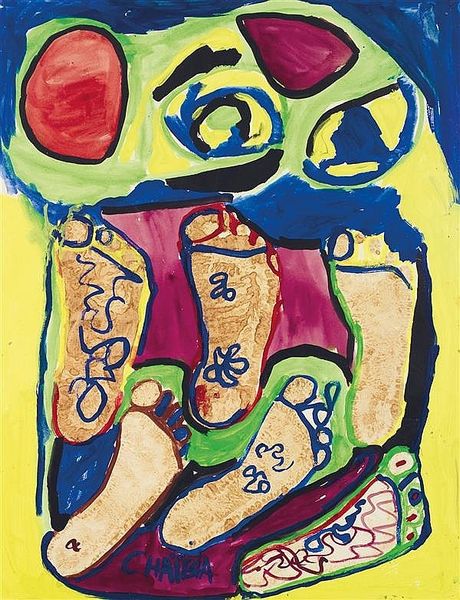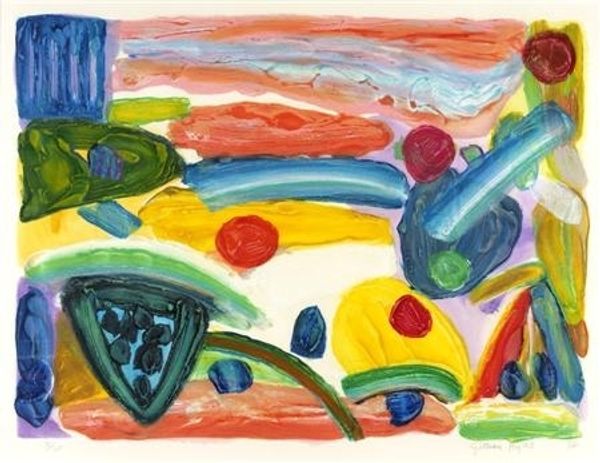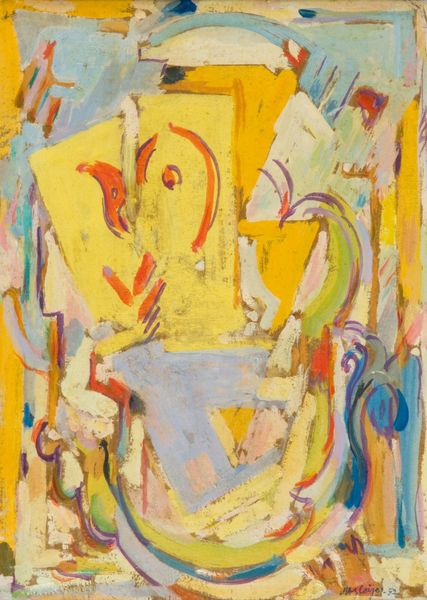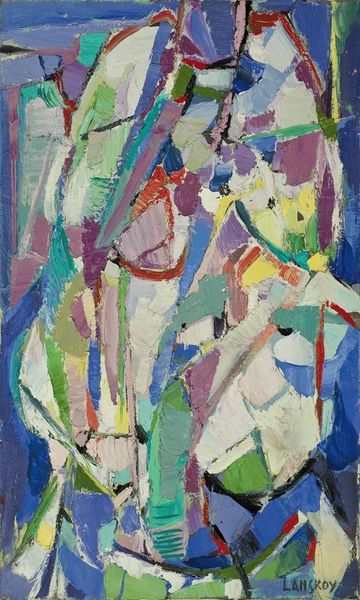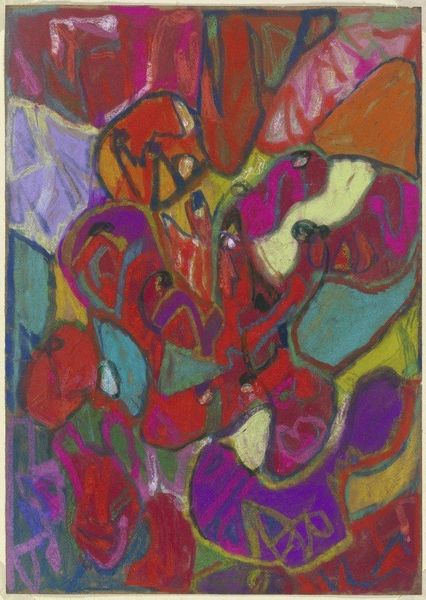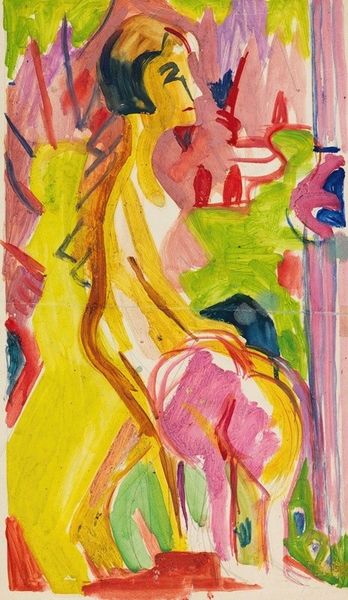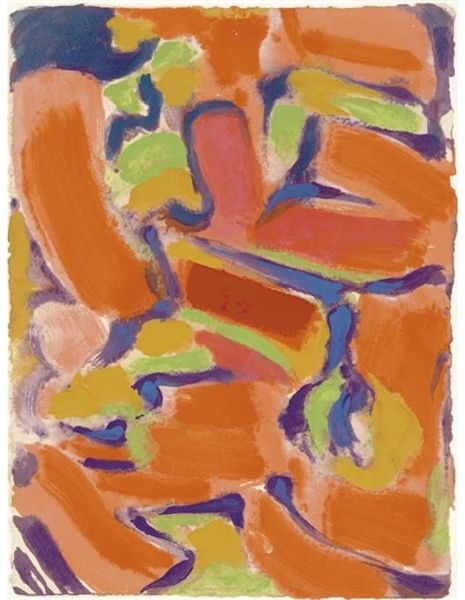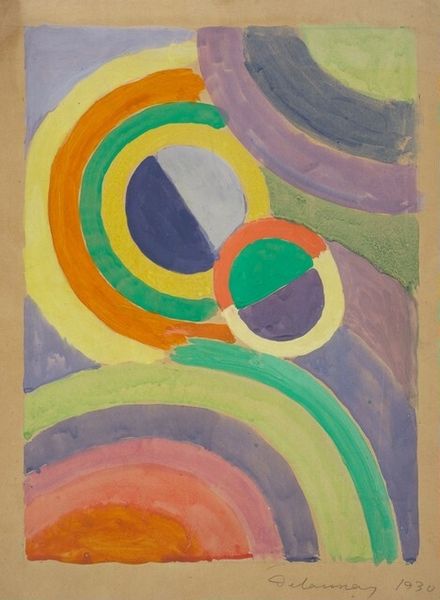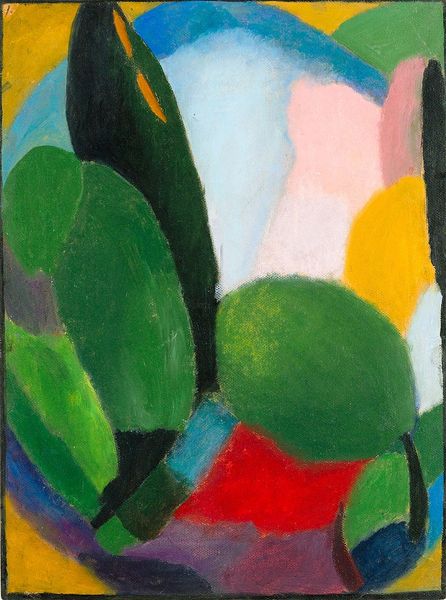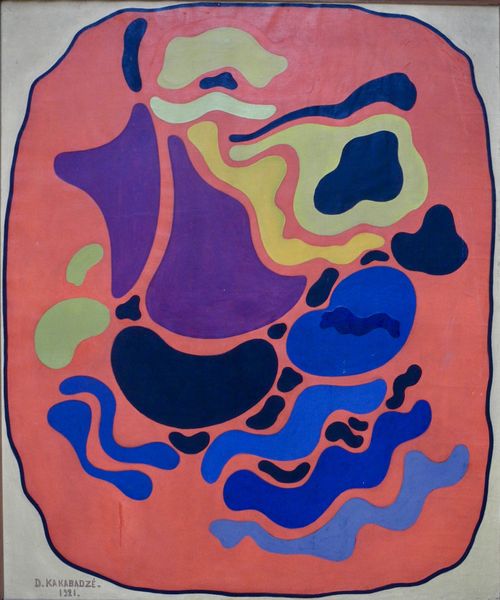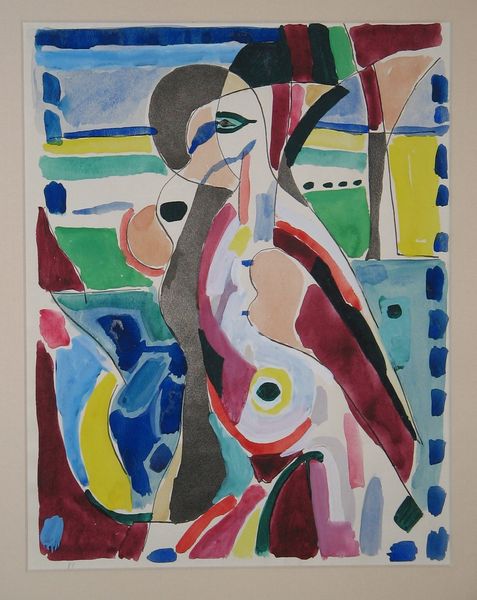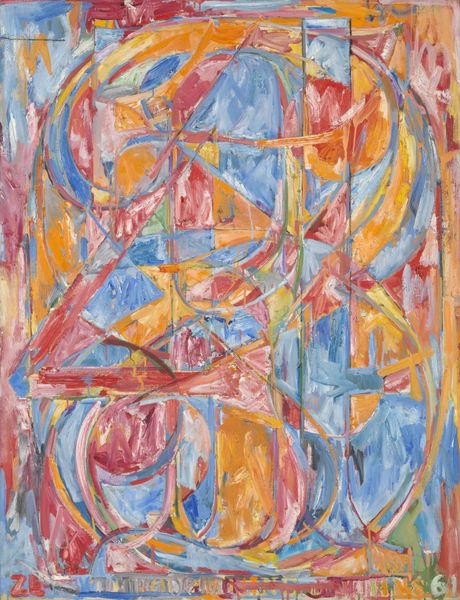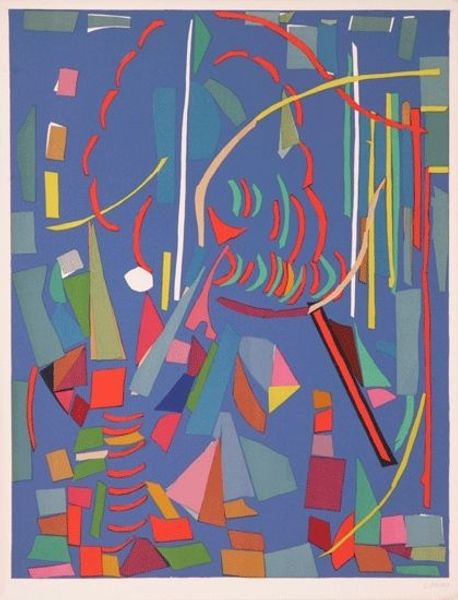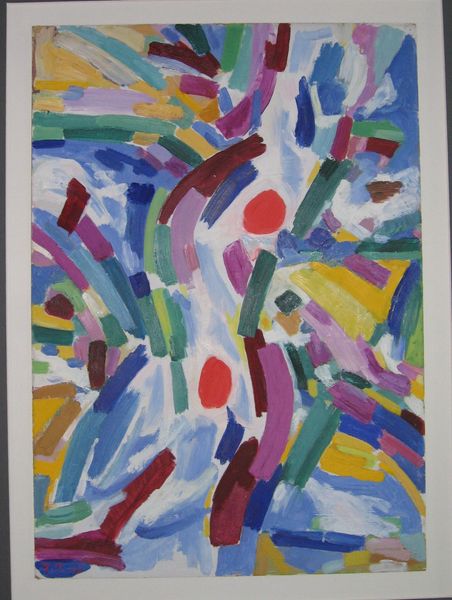
painting, oil-paint
#
abstract-expressionism
#
organic
#
abstract painting
#
cobra
#
painting
#
oil-paint
#
form
#
abstract pattern
#
organic pattern
#
abstraction
#
line
Copyright: Asger Jorn,Fair Use
Curator: Asger Jorn created this intriguing painting, titled "Didaska I," in 1945, using oil paint to depict what seems like a vibrant, biomorphic abstraction. Editor: My first impression is that this piece feels incredibly dynamic, almost chaotic. There is an intense interplay of shapes and colors, which makes me think of a joyful, but somehow also slightly unsettling dreamscape. Curator: Jorn's artistic journey was significantly influenced by the political upheavals of the mid-20th century. Considering that "Didaska I" was painted right after World War II, the seeming chaos might reflect the fragmentation and uncertainty of that era, wouldn't you agree? Perhaps even a rejection of more structured artistic conventions, a statement of liberation through abstraction? Editor: That’s a compelling reading. But just looking at the surface, it is interesting how Jorn balances the composition with what appears to be deliberate asymmetry. See how he uses a restricted palette of organic and muted tones on the left to counterpoint the brighter shades of yellow, pink and red on the right, which generates a vital visual tension. Curator: Indeed. It’s worth noting that Jorn was part of the COBRA movement, which rejected both socialist realism and geometric abstraction in favor of spontaneous, experimental, and often politically charged art. His engagement with surrealism early in his career encouraged a kind of liberation from traditional art academies. Editor: I notice the strong use of line, not just to define shapes, but as a compositional element in itself. The looping and curving lines remind me of flowing streams. The eye is also constantly drawn across the canvas through those dark outlines. Curator: Absolutely. And within COBRA, art was really seen as a social tool, so Jorn was not merely experimenting with form, but actually attempting to create new visual languages that resonated with the collective consciousness of a post-war society. His works embody his deep belief in art's transformative potential. Editor: It leaves one thinking, certainly. Looking at it, one can read it formally with color and structure, or connect with his historical context that makes "Didaska I" not just an arrangement of color and forms, but also a cultural artefact born out of intense societal tension and artistic experimentation.
Comments
No comments
Be the first to comment and join the conversation on the ultimate creative platform.
